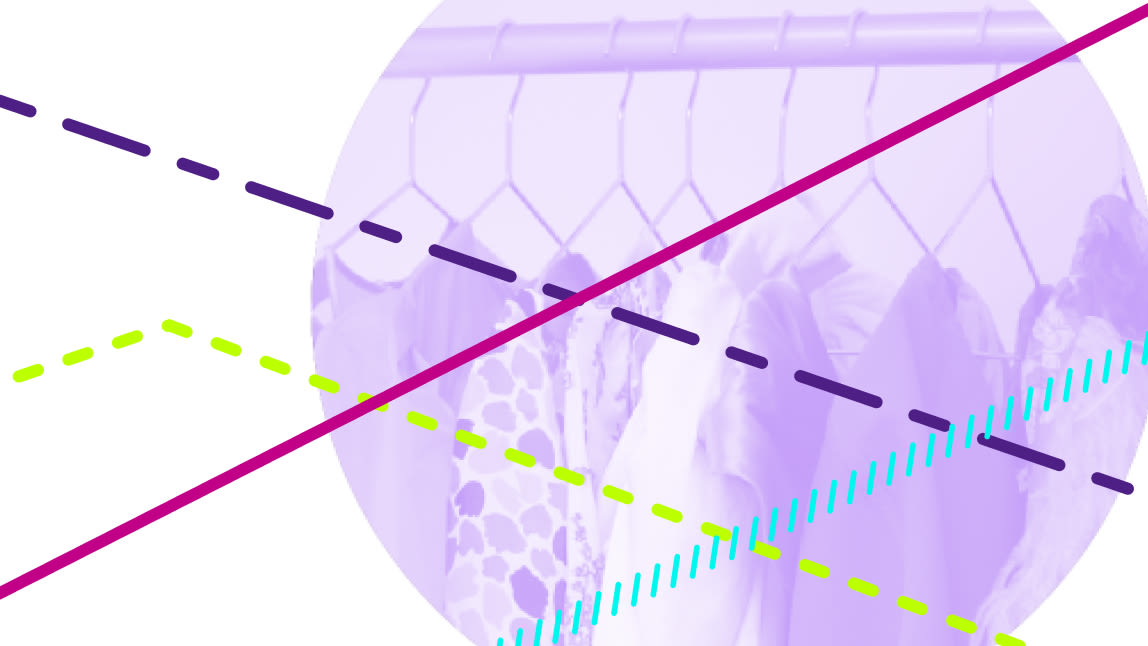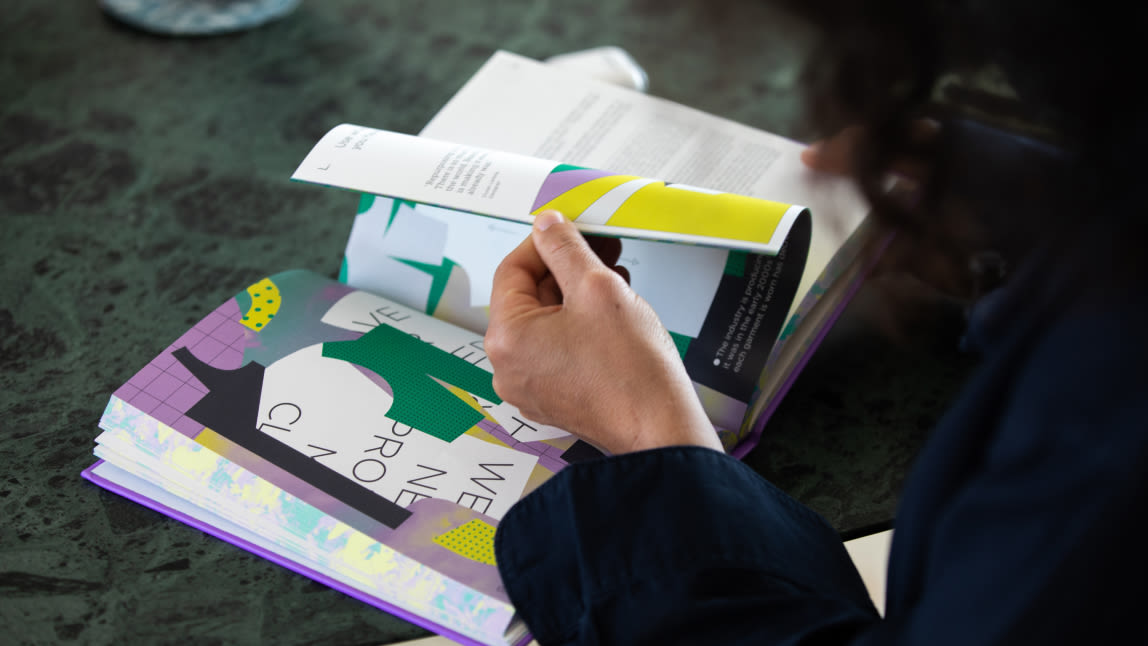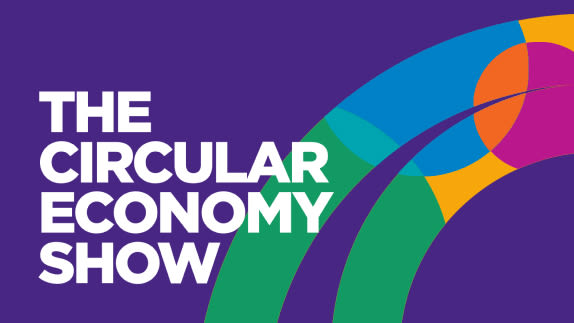In the final episode of our fashion series, we go to London to meet Patrick McDowell, a pioneering British high-end designer who has been applying circular design for fashion since starting their career. They tell us about their journey and their vision for the future of the fashion industry.
Listen on Spotify, Apple Podcasts, or wherever you get your podcast.
Transcript
Finley Phillips 0:02
Welcome to the Circular Economy Show Podcast. I'm your host Finn. This is the final episode of our fashion series. And over the past couple of episodes, we've met two companies working towards a circular economy for fashion. That means creating better products and services for customers, contributing to a resilient a thriving fashion industry and regenerating nature. In today's episode, we travelled to London to get VIP access to a pioneering British high end fashion designer. With a unique and innovative attitude towards design, Patrick McDowell hopes to change mindsets in the fashion industry, and transform actions all the way from the boardrooms to the high street. But where did it all begin? We visited Patrick studio in London near the iconic Tower Bridge to find out.
Patrick McDowell 1:01
The first thing I ever made when I was 13, was a school bag out of a pair of jeans. And I was fascinated then by how people reacted to that. And people didn't believe that this thing I was carrying around had been made out of something which they were wearing. And so I found that very interesting and engaging. And I thought this is something I'd like to do more of. In many ways, circularity has made a lot of decisions for me that have has enabled me and my brand to progress, maybe quicker than it would have without it because those decisions were made for me by what was available. I think it was clear as a young person that I had to kind of do things my own way to make things happen. And it also became clear working in the fashion industry that there was many flaws that didn't really make any sense both from a from a waste perspective, but also just from a from a design perspective as well. It didn't seem like a clever idea to be making stuff if it was all going to be going to landfill or incineration.
Finley Phillips 2:12
Patrick's first encounters with circular design were driven by financial constraint. They told us more about how an education at Central Saint Martins harnessed their creative potential. And
Patrick McDowell 2:22
I decided that fashion was a viable career option and Google the best place to study it. And the result was Central Saint Martin's womenswear. And so from then on, I tried everything possible to get in.
Finley Phillips 2:37
Since studying at Central Saint Martin's, Patrick is making great strides and reinventing the role of a fashion designer. They explained how they ensure their designs not only make us feel powerful, but encouraged us to act.
Patrick McDowell 2:50
It's the stories that people get behind. You can list off facts and figures for days. But it's ultimately the story that someone tells that you remember, and that you kind of take and put into your own life. And so I think that it's my role as a designer to tell those stories through my collections, but also wider responsibility for the circular narrative that we keep doing it in a really compelling and interesting way that encourages people to become (circular).
Finley Phillips 3:20
It was while producing their graduate collection that Patrick realised that using repurposed materials further enhanced the story behind their designs.
Patrick McDowell 3:29
Yeah, I guess when I was here became apparent, especially to my graduate collection that the power of the story attached to it could really help the work go a lot further. I think especially when you're working with like repurposed materials, or upcycled Swarovski crystals as I was, then the, the story behind those materials is so much richer. And so when you add it to an amazing like personal concepts, it just really helps the whole thing to kind of take up.
Finley Phillips 4:02
The Graduate collection was just the start for Patrick, their willingness to support a global push to make fashion circular, has seen them collaborate with brands across the fashion industry. Here, they tell us more about their latest collection, the collaboration with Rambert Dance Company.
Patrick McDowell 4:19
So with this collection, we started with their archive and then went on to work with the costume department to find fabrics and costumes that they could no longer use. And we've been able to kind of remake and reinterpret them for this collection.
Finley Phillips 4:33
So Patrick adds another layer to the design process by choosing to primarily use repurpose materials. We follow Patrick as they told the story of the collection to the dancers at Rambert and walks them through the design process.
Patrick McDowell 4:48
So here we are at Rambert's amazing building on the South Bank in London and we're in the London studio, which is actually where the runway will take place. Today's incredibly exciting. It's the first rehearsal that the dancers are doing for the show, and I'm going to meet them and introduce the collection to them and show them some of the pieces from the archives that originally inspired the collection.
Patrick McDowell 5:08
We started with Burberry using like old Burberry materials. So it was very much like from the very beginning, it was always about, like, what do you want to make? And then what have you got? And then what can you make from that, but because you kind of go through, it's almost like if you like, imagine, if you like planned a dance once or planned it twice, you're like second time you think of things more that are more interesting. And that's kind of what happens because we design it and plan what we want, and then look what we've got and kind of design it again. And it usually makes it better.
Finley Phillips 5:42
Patrick was excited to tell the dancers about the material innovations being applied to the collection.
Patrick McDowell 5:49
So you can see like the ballet, there's a blazer with the ballet print, and then puffy skirt. And that material that's over is Rambert costume fabric. And then the padding underneath is this new material that's been made by mycelium company, which is made completely from mushrooms. Yeah. So it's like 100%... Like you could even eat it, which I think it's so exciting.
Finley Phillips 6:17
How does Patrick feel about using circular materials?
Patrick McDowell 6:21
We had conversations with people when we first started where the answer was always no to do with circularity and remaking pieces. And now people come to us asking those questions, which is incredible to see. And I think it's been amazing to watch the innovation that's happened, especially in fabric.
Patrick McDowell 6:42
Because, you know, fashion starts with fabric. And often the changes happen there first, and the new innovations that have come to commercial reality in the past five years have been really promising. And so if that continues to happen also with supply chain and the manufacturing of the clothing and the design itself, I think we could see some really amazing shifts in the next 10 years.
Finley Phillips 7:09
Patrick's understanding of fashions role in the circular economy goes far beyond the designs and materials used. So how are they embracing circularity and circular business models as a luxury fashion brand?
Patrick McDowell 7:19
I mean, for me, it's always been really important that sustainability and circularity is just built into the business model at every point, and not an excuse for bad design. Sometimes you see people that focus on sustainability as the concept and I think that never really worked. So people come to us because they love our pieces, and they like how they look. And they also like their message that they stand for and I guess they're intertwined, but I've always thought that you still have to have a really great creative concept and then just business wise have secularity sustainability built in.
Finley Phillips 7:59
So circularity is at the core of Patrick McDowell the brand, but is it possible for other brands, including those on the high street to adopt this to?
Patrick McDowell 8:08
We are a luxury brand and so our prices reflect that but that doesn't mean that sustainability and circularity can't happen at all points to the industry. I think that there are tools that can be used at all levels of fashion and it just happens that I'm doing it in a in a luxury space. But it's completely possible to do it on the high street and in kind of the mid range of fashion as well. There's... this becomes a slight problem with like ultra fast fashion and and that space I think it's it's quite challenging at certain price points when it when you're not able to cover the costs of the garment itself.
Finley Phillips 8:50
Over the last three episodes, we have learned how a circular economy represents a significant opportunity for new and better growth in the fashion industry. During our time with Patrick, we learned about the pivotal role designers play in not only creating beautiful clothing, but also redesigning the systems they sit within. Scaling business models like Patrick's will be vital to keep more clothes in use for longer and subsequently allow companies to make revenue without making new clothes. Thank you for joining us on this episode of the Circular Economy Show podcast on the Ellen MacArthur Foundation. Join us next week as we bring you the end of year review for 2023. Thanks for listening.





